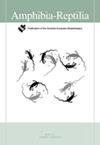两栖动物基因组学的口腔拭子
IF 1.3
4区 生物学
Q3 ZOOLOGY
引用次数: 3
摘要
保护遗传学必须在促进动物福利的同时,在DNA采样的技术挑战之间找到平衡。在两栖动物中,颊拭子提供了一种侵入性最小的DNA来源,但大多数疱疹学家仍然不使用它们,部分原因是由于下一代测序(NGS)分析已成为常规,人们怀疑它们是否能提供足够的材料。在这篇文章中,我们希望通过经验证明,颊拭子为广泛使用的NGS方法(RAD测序)提供了DNA量和成功率,这与青蛙和蟾蜍中更具侵入性但更常用的样本相当,从而改变他们的想法。因此,我们呼吁改变DNA采样做法,并强调这样一个事实,即颊拭子除了被证明的可靠性之外,还为越来越严格的道德委员会颁发采集许可证提供了便利,尤其是在涉及濒危物种时。考虑到这一目的,我们通过视觉和文本指针分享我们对两栖动物颊拭子的长期经验。本文章由计算机程序翻译,如有差异,请以英文原文为准。
Buccal swabs for amphibian genomics
Conservation genetics must find the balance between the technical challenges of DNA sampling while promoting animal welfare. In amphibians, buccal swabs offer a least intrusive source of DNA, but most herpetologists still refrain to use them, partly due to doubts regarding their effectiveness to provide enough material now that next-generation sequencing (NGS) analyses have become routine. In this article, we hope to change their minds through an empirical demonstration that buccal swabs offer DNA amounts and success rates for a widely used NGS approach (RAD-sequencing) that are equivalent to those of more intrusive yet commonly used samples in frogs and toads. We thus call for a shift of DNA sampling practices, and stress the fact that beyond their proven reliability, buccal swabs facilitate the issue of collection permits by increasingly restrictive ethical committees, especially when it comes to endangered species. With this purpose in mind, we share our long-term experience with amphibian buccal swabs through visual and textual pointers.
求助全文
通过发布文献求助,成功后即可免费获取论文全文。
去求助
来源期刊

Amphibia-Reptilia
生物-动物学
CiteScore
3.10
自引率
6.20%
发文量
39
审稿时长
6-12 weeks
期刊介绍:
Amphibia-Reptilia is a leading European multi-disciplinary journal devoted to most of the aspects of herpetology: ecology, behaviour, evolution, conservation, physiology, morphology, paleontology, genetics, and systematics.
Amphibia-Reptilia publishes high quality original papers, short-notes, reviews, book reviews and news of the Societas Europaea Herpetologica (SEH). The Societas Europaea Herpteologica (SEH) website is located at: www.seh-herpetology.org.
 求助内容:
求助内容: 应助结果提醒方式:
应助结果提醒方式:


